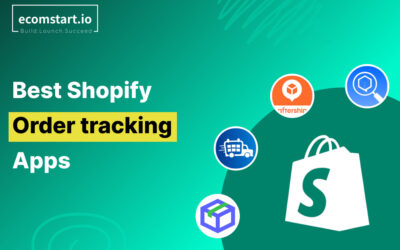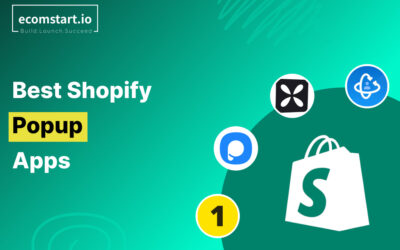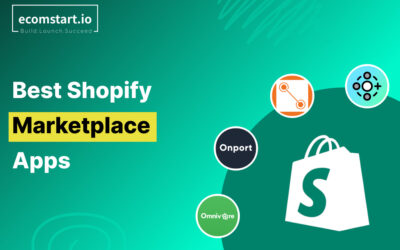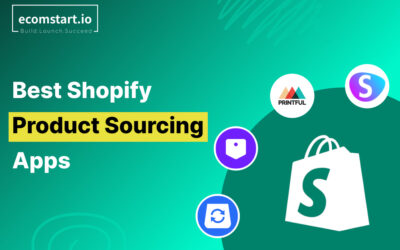Salesforce Shopify Integration: All You Need to Know [2024]
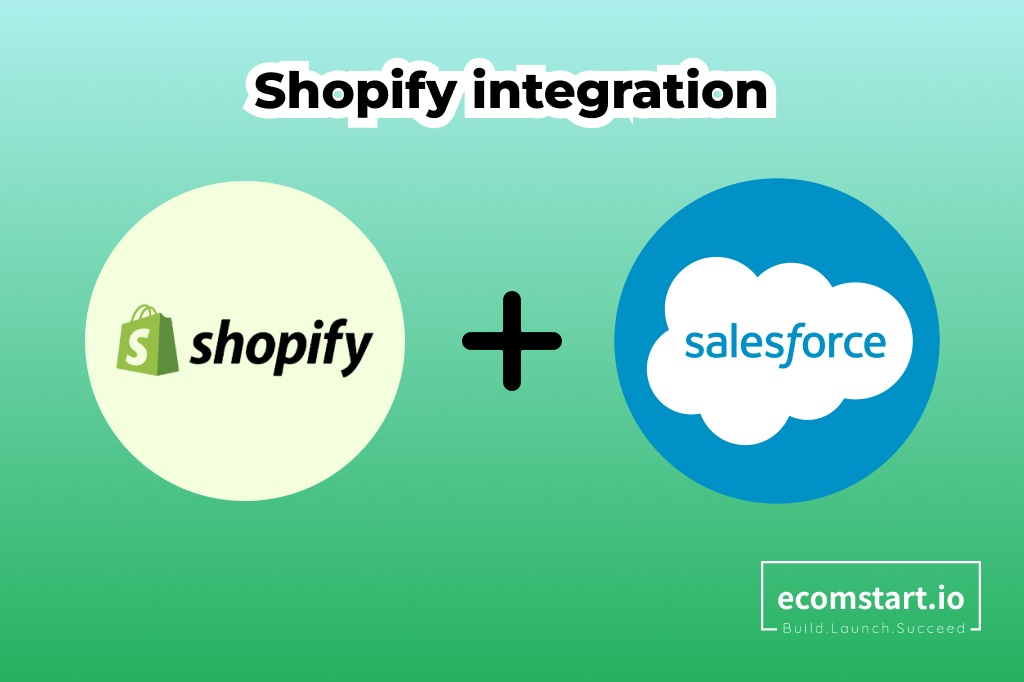
Welcome to the guide on Salesforce Shopify integration! As we step into 2024, integrating your Shopify store with Salesforce can remodel your business operations, bringing a new level of performance and profitability.
This article will demystify the method of Shopify integration with Salesforce, highlighting the key blessings and the way-to steps. Whether you are struggling with dealing with consumer statistics, streamlining sales strategies, or improving your customer service, this integration can be the answer you have been looking for.
Our guide is designed for simplicity and ease of expertise, promising to provide actionable solutions for your cutting-edge demanding situations. So, why is that important? In the cutting-edge competitive eCommerce landscape, staying ahead entails leveraging excellent gear and strategies. Trust us, that is well worth it slow. Let’s dive in!
Contents
1. Salesforce overview

At the fundamental level, Salesforce is an instrument for CRM. It is created to help you simplify your life by handling all customer interactions at a centralized and dedicated place. Be it sales lead tracking, marketing campaigns, or after-sales service Salesforce outperforms it all.
Some of its features that come into play include a contact management system, an opportunity management subsystem, and reports are customizable. Such characteristics are beneficial for companies who want to keep everything in order, save some time, and increase their income revenues.
So, what entails Salesforce Shopify integration? In plain words, it is the process when you integrate your Shopify store with Salesforce. This integration facilitates a smooth flow of data between the two systems.
For example, if a consumer submits an order through your Shopify store or is it between any other details of the customer that are lost to the sales force appear directly. This saves you the time it takes to manually enter data, minimizes errors, and frees you up for other tasks.
Setting up Salesforce Shopify integration will allow you to enjoy all the benefits of the advanced CRM possibilities that are available with Salesforce in your very own Shopify platform. This implies that you will be able to effectively and efficiently sell your products in addition to tracking sales, managing customers, and analyzing the data at one point.
The integrated system may help to solve several issues, including scattered customer data, unproductive sales procedures, and poor quality of service provided.
2. Benefits of integrating Salesforce with Shopify
So what is the rationale for Shopify integration with Salesforce? Let’s dive into the benefits!
Firstly, it provides data synchronization. This means that your Shopify store’s data such as customer information, purchase history, and other relevant details can all be synced automatically. This simply implies that a person will never have to worry about inaccurate information or waste time manually feeding in data ever again.
Secondly, it gives a holistic view of your customer. With everything about customers under a single roof, you have access to more insights about how the customer has been behaving and their preferences. This precious information helps you in the customization or creation of a marketing campaign and enhances the levels of your customer service.
Thirdly, it enhances sales efficiency. Since all the sales data is easily accessible in Salesforce, your team of sellers can keep record orders, find out about adults or screaming opportunities and conclusively sell faster.
In addition, using automated workflows will help them spend most of their time selling instead of performing administrative functions.
Fourthly, it allows for improved customer service. Orders and problems can be identified, managed, or worked on in real-time while order inquiries from customers may also get addressed quickly by the support team raising satisfaction levels that translate to good reviews.
Finally, it allows for intelligent decision-making. You can get detailed reports and insights with the help of advanced Analytics tools provided by Salesforce combined with your Shopify Data. This implies that you can make decisions based on data and it may uplift your sales as well as profit margin.
3. Option to integrate Salesforce to Shopify
First and foremost, you must be asking yourself- ‘What might I get into to materialize the dream of Salesforce Shopify integration?’The truth is that there are several ways in which or approaches through which this can effectively happen.

One such way is to employ an integration platform, for example, Zapier and Automate. These systems can integrate your Shopify store with Salesforce through a simple user interface that does not require any knowledge of coding. They provide pre-constructed models and workflows that can be tailored to the requirements of your enterprise activities.
Then you may also use a respective dedicated Salesforce Shopify app — for instance, Breadwinner or DBSync. These apps, in turn, are targeted specifically for this integration and offer more advanced features coupled with deeper integration.
Or, if you are technically oriented and have the necessary expertise in your company’s IT department, a tailored integration can be established using means of Salesforce API and Shopify API. This is the most flexible option but it demands the highest effort.
Select the combination that is right for your business capabilities and capacities.
4. Salesforce Shopify integration: A step-by-step guide
Integrate Salesforce with your Shopify store today. Great! But before we proceed to the process itself, let us review some necessary conditions.
4.1. Preparation
- Shopify Store: You need to have an enabled Shopify store with products.
- Salesforce Account: You need a Salesforce account. If there is no such account, create one. There are various Salesforce plans and select one that fits your case.
- Integration Tool: Choose the integration tool to be used. The options here may be Zapier or Automate. io and the dedicated Salesforce Shopify apps such as Breadwinner or DBSync.
For our tutorial, we will work with Zapier because it is intuitive and easy to use. Although it is not a requirement, you may select any other instrument that suits your preferences. So this is it, once you are all prepared we shall move ahead stage by stage!
4.2. Step by Step Guide
Step 1: Create a Zapier Account
The initial step before integrating Shopify into Salesforce is generating an account with Zapier.
If you do not already have an account now is the time to sign up for one. Just open the Zapier website and select ‘Sign Up’. You will need to give very basic information; your name, e-mail and a password.
The positive side is that if you are just starting, Zapier has a free plan for users. This enables you to try their services before settling for a paid plan. The process is very fast and easy, and you will be a step closer to integrating your Shopify store with Salesforce. Onwards!
Step 2: Connect Your Shopify Store
Moving along in our guide through Step 2 – connect the Shopify store to Zapier.
When you sign into your Zapier account, click on ‘Make a Zap,’ and everything will follow. Find the ‘Choose App & Event’ section. In the field, type ‘Shopify’ and pick it from a list that will drop down.
Then you will need to click Connect Shopify Store. Just type in the proper space for your store URL. Then select ‘Yes, Continue’. And voila! Now your Shopify store is integrated with Zapier. We’re making progress, aren’t we?
Step 3: Connect Your Salesforce Account
Okay, Shopify is connected. Let’s move to Salesforce next. The third stage of our guide to integrating Salesforce and Shopify is connecting your Salesforce account with Zapier.
As previously, proceed to the section ‘Choose App & Event’. This time type in ‘Salesforce’ and choose from the drop-down option available. Then you will be required to integrate your Salesforce account.
To achieve that, you will have to log in with your Salesforce credentials. Just fill in the details and you’re all set! Zapier has been linked to your Salesforce account. We are only in the middle phase of things so we should continue.
Step 4: Set Up Trigger
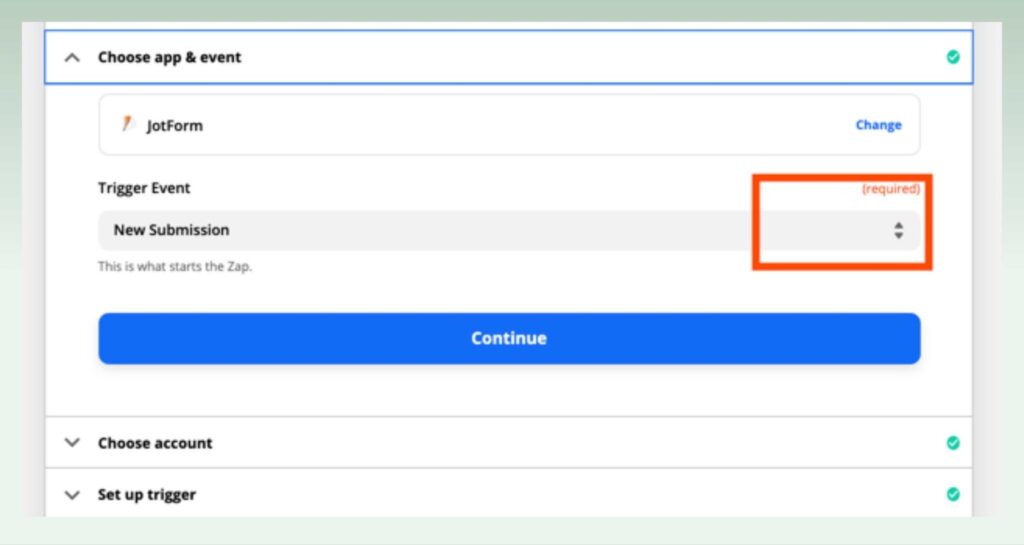
On to Step 4, the setup of your Zap’s trigger. This is the climax of all things. Beneath the Shopify app category, there is a drop-down menu. In the case above, you should choose ‘New Order’ or any other event that is to cause your Zap.
After completing the triggers, it is time to trigger a test on them and verify that they are functioning as expected. For this, you will just need to use the on-screen instructions. If all settings are fine, your trigger should work smoothly.
This puts us one step closer to completing your Salesforce and Shopify integration. Good job so far! Let’s keep going.
Step 5: Set Up Action
Setting up the action for your Shopify integration with Salesforce is all about this step since we already set our trigger in advance. Your action is the event that happens upon the occurrence of your trigger.
In the Salesforce app, you will see a roster of potential actions. To do this, let’s choose ‘Create Record’ or any other action you find necessary. First, you will have to indicate which Salesforce object is supposed to be created after the action takes place.
For instance, if you would like a fresh lead to be created in Salesforce every time an individual places a new order in Shopify; the option that you will indicate is ‘Lead’. So there it is – you have placed the action.
Step 6: Map Fields
Moving to Step 6, Fields Mapping. This is a crucial step because this is where you tell Zapier in which parts of Salesforce to put the data extracted from Shopify.
For instance, if you want the email of your client from a new order in Shopify to be placed under the ‘Lead Email’ field within Salesforce then this is where one ought to initiate that. If you would use the field ‘Customer Email’ from Shopify then it should connect to ‘Lead Email’ in Salesforce.
Always keep in mind that the mapping of fields depends on what data you wish to be transferred and its destination.
Step 7: Test and Turn On Your Zap
And now we are at Step 7, which is the last step to take in your way or Salesforce Shopify integration. Finally, it is time to check your Zap. This is essential to guarantee that everything acts as it was meant.
If the test goes well and everything appears right, you can switch on your Zap. Congratulations! Henceforth, when your designated trigger event occurs in Shopify the related action will be performed automatically within Salesforce.
You have now successfully synchronized Shopify with Salesforce! That wasn’t too much trouble, was it? Again, it should be remembered that this is just a general guideline. You may be required to tailor the steps based on your individual needs or choose another integration specifications tool.
If you are not confident doing this, try consulting a professional. Let the force be on your side as you integrate Salesforce with Shopify!
5. Common Integration Issues & how to solve
Although the procedure of Salesforce Shopify integration appears to be simple and clear, you can still face some easy problems. Let me walk you through some of these possible shortcomings and how to overcome them.
Field mapping errors are often one of the most common issues. This may occur mainly if the fields of Shopify that do not match those found in Salesforce. To correct this, review your mapping configuration. Make sure that all fields of Shopify correlate properly to the equivalent Salesforce field.
Another common issue is inaccuracies in data synchronization. If your data is not syncing between Shopify and Salesforce, there may be several reasons for this. Either there could be some limitation with the API or there can also be a problem in setting up the trigger event.
Check the settings properly and ensure that everything has been set in its right position. Also, ensure that you do not surpass any API limits.
You may also face problems with individual record updates. For example, a customer updates information in Shopify but will not update it in Salesforce. In such cases, review triggers and actions. You may need to create another Zap for record updates.
Efforts should be made to note that troubleshooting is certainly a part of any connection process. Therefore, if you have issues with Shopify integration into Salesforce do not be demoralized. Just a little patience and some time for adjusting – all your systems can work together perfectly as soon as you do this.
6. Conclusion
And there you have it – full coverage of the Salesforce Shopify integration. This may seem overwhelming but do realize that the cost savings associated with process outsourcing are tremendous. The difference these actions can make, from streamlining your processes to enhancing client experience is significant.
At Ecomstart, we help you simplify difficult processes. We believe that this step-by-step guide has facilitated your comprehension of the integration process and its implementation. Recall, that the voyage does not end there. Continue to evolve, continue with the integration and continued development of your business.
You should not forget anytime you want to refresh your memory, revisit this guide on ecomstart.io. As always, if you run into any trouble or have questions let us know.
Some of the best practices that help with Shopify Salesforce Integration include well-thought planning before implementation stipulating your requirements and ways you can meet them. Preparing a clear structure of data that you need to be synchronized and automation they want is very important.
Regular testing of your integration configuration can help you avoid a lot of problems. Similarly, do not let the integration run individually through fixed code or contact agencies without proper research.
Indeed, real-time data synchronization between Salesforce and Shopify is possible. This also implies that any changes done in one system, for instance updating customer information or adding new products will be automatically reflected on the other platform.
Although the integration of Salesforce into Shopify does not necessarily mean having a technical background, it instead requires some knowledge about both platforms. Still, with the use of an integration app such as PieSync, this process can be eased and therefore it even becomes possible for users without a technical background to perform integrations.



